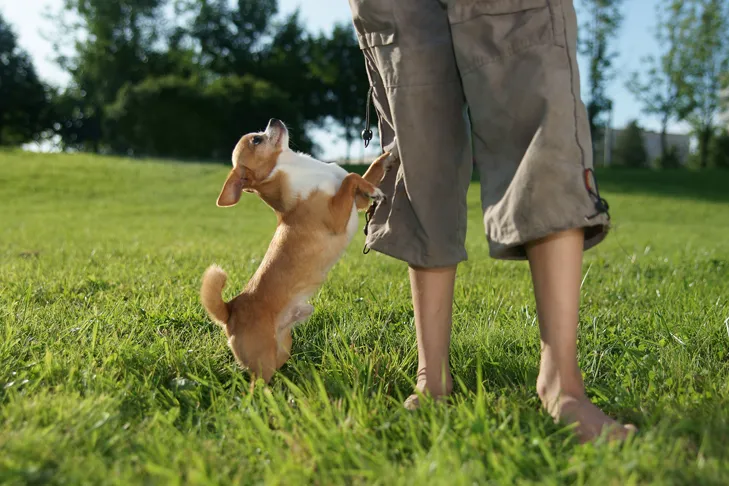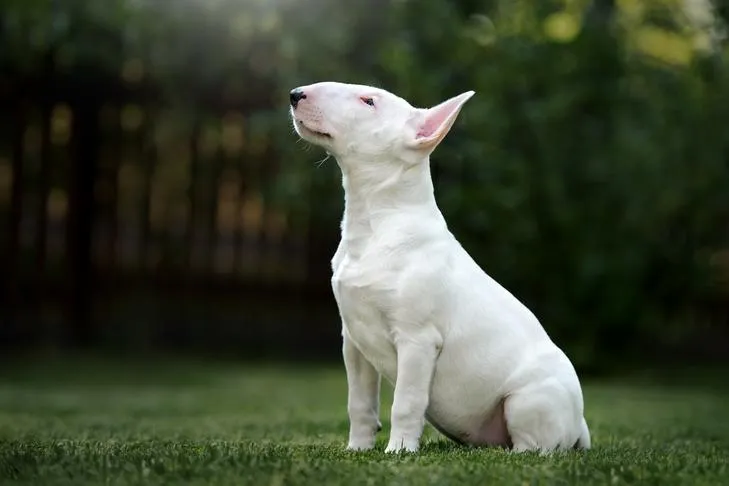For many dog owners, the joyous greeting of their furry friend often comes with an energetic leap. While a dog jumping up on people is a natural canine behavior – allowing them to say hello face-to-face and garner immediate attention – it can quickly become an unwelcome habit. From muddy paw prints on clothes to the risk of knocking over children or seniors, this common issue requires effective training and management. If you’re looking for solutions on how to stop your dog from jumping up on people, this guide will provide you with the essential techniques to foster polite greetings and a more enjoyable experience for everyone. Learning to teach puppy not to jump on you from an early age can prevent deeply ingrained habits.
Understanding Why Your Dog Jumps: The Attention Connection
Dogs are smart, and they quickly learn which behaviors earn them rewards. When a dog jumps up, it almost always guarantees a reaction – whether it’s a laugh, a gentle push, a stern “no,” or excited praise. From your dog’s perspective, any form of attention, positive or negative, serves as a reward. Even pushing your dog away can be interpreted as part of a playful wrestling game, inadvertently reinforcing the jumping behavior. Other family members, visitors, and even strangers can unknowingly contribute to this habit by acknowledging the jumping.
To effectively eliminate jumping from your dog’s greeting repertoire, you need to break this association between jumping and reward. This involves two key strategies: managing your dog’s environment to prevent opportunities for jumping, and teaching them an alternative, more appropriate way to greet people.
 A small, enthusiastic dog jumps up on a person, demonstrating common attention-seeking behavior.
A small, enthusiastic dog jumps up on a person, demonstrating common attention-seeking behavior.
Laying the Groundwork: Essential Training Principles
While simply ignoring your dog when they jump might theoretically reduce the behavior over time (as it’s no longer rewarded), this approach can be slow and frustrating for both you and your dog. Moreover, not every person your dog encounters will understand or adhere to this rule. Dogs need clear guidance on what to do, rather than just what not to do. For instance, teaching your dog to “sit” for greetings is a much clearer instruction than simply “don’t jump.”
The specific alternative greeting behavior you choose is up to you. You might prefer your dog to simply keep all four paws on the floor, or you might opt for a more formal “sit” or “lie down” command. Regardless of your choice, consistency and positive reinforcement are paramount for successful training.
Training the “Four on the Floor” Greeting
This method focuses on rewarding your dog for keeping all four paws on the ground during greetings. The goal is to prevent the jumping behavior by proactively reinforcing the desired action.
- Preparation: Place your dog on a leash and have a friend or family member (the “approaching person”) ready to help. Keep high-value treats easily accessible.
- Initial Approach: As the approaching person slowly walks towards your dog, toss several treats directly onto the floor before your dog has a chance to jump.
- Reward and Pet: While your dog is focused on eating the treats from the floor, have the person calmly pet and greet them.
- Disengage: Before your dog finishes all the treats, have the person turn and walk away, signaling the end of the interaction. This teaches your dog that polite greetings are brief and rewarding.
- Increase Duration: After several repetitions of short greetings, begin to extend the greeting time, continuously tossing treats onto the floor to keep your dog’s attention and paws grounded.
- Fade the Treats: Once your dog consistently keeps all four feet on the ground when the person approaches, you can start letting them greet the person before you place the first treat. Gradually reduce the number of treats until the polite greeting itself (attention from the person) becomes the primary reward.
The success of this technique relies on your speed and anticipation. You must get the treats on the floor before your dog can even think about jumping. If your dog does jump, immediately stop feeding treats, and have the approaching person turn and walk away. Your dog will quickly learn that keeping all four paws on the floor earns attention and treats, while jumping makes the rewards disappear.
 A calm Bull Terrier puppy sits patiently in the yard, demonstrating good greeting etiquette.
A calm Bull Terrier puppy sits patiently in the yard, demonstrating good greeting etiquette.
Teaching “Sit” for Polite Greetings
Training your dog to sit for greetings is another excellent way to establish polite behavior. This method teaches your dog that a seated position is the key to receiving attention and affection. Consistent practice is vital, and it’s helpful if your dog already has a strong “sit” command in various environments without distractions.
- Set Up: Tether your dog’s leash to a sturdy object like a doorknob or heavy piece of furniture. This prevents them from moving forward or jumping.
- Initial Practice: Stand a few feet away and ask your dog to “Sit.”
- Approach and Reinforce: If they sit, calmly walk towards them. If they stand up before you reach them, immediately turn and walk back to your starting point and ask for the “Sit” again.
- Quiet Praise: If they remain sitting as you approach, gently praise and pet them. Continue greeting them as long as they stay seated. The moment they stand up, turn and walk away, ending the interaction.
- Gradual Excitement: As your dog understands the connection between sitting and receiving your greeting, you can gradually make your approaches more exciting (e.g., a slightly faster walk, a happier tone).
- Introduce Others: Once your dog has mastered sitting for greetings with you, repeat the process with friends and family members, gradually introducing more people in a controlled environment.
Remember to reinforce the “sit” command in other daily routines – before meals, going outside, or getting a toy. This makes “sit” your dog’s default way of politely asking for things, strengthening the behavior for greetings.
 A well-behaved Beagle sits comfortably inside its open crate, ready for polite interaction.
A well-behaved Beagle sits comfortably inside its open crate, ready for polite interaction.
Preventing Jumping During Training: Effective Management Strategies
While you’re actively teaching your dog new greeting behaviors, it’s crucial to manage their environment to prevent them from practicing the unwanted jumping. Every time they jump and receive a reaction, it sets back your training efforts.
- “Go to Your Place” Command: If your dog knows a strong “go to your place” cue, send them to their mat or crate whenever the doorbell rings or guests arrive. This keeps them out of the way until they can greet politely.
- Physical Barriers: Utilize a dog gate at your entranceway to physically prevent your dog from reaching visitors immediately. This creates a safe space for initial greetings while your dog observes calmly.
- Leash Control: Keeping your dog on a leash when guests arrive allows you to maintain control and gently guide them if they attempt to jump. You can use the leash to keep them “four on the floor” or to tether them temporarily.
- Distraction with Toys or Treats: Keep a stash of high-value toys and treats near your front door. When guests arrive, you can throw a treat away from the doorway to occupy your dog, giving your visitor time to enter. Alternatively, your guest can use the treat or toy to reward your dog for an appropriate, calm greeting.
- Managing Street Greetings: Preventing jumping when out on walks can be particularly challenging, as strangers may not know your rules. Until your dog consistently greets friends and family politely, try to avoid direct greetings with strangers. Instead, use a “watch me” cue or squeak a toy to get your dog’s attention as people pass by. For walks where your dog tends to get overly excited, consider reviewing guides on how to get puppy to go on walks and how to stop dogs from pulling when walking to ensure better leash manners overall.
Once your dog is ready to greet people on the street, communicate your procedure to the person beforehand. Ask them to ignore your dog if they don’t follow the rules. With consistent effort and clear communication, your dog will soon understand how to say hello politely, whether at your front door or out on the sidewalk.
Learning How To Stop Your Dog From Jumping Up On People takes patience, consistency, and a clear understanding of canine behavior. By implementing “four on the floor” or “sit for greetings” training, combined with effective management strategies, you can transform your dog’s enthusiastic but unruly greetings into calm, polite interactions. Remember that every successful interaction builds confidence and reinforces the desired behavior, ensuring a happier and safer experience for both your dog and everyone they meet.
